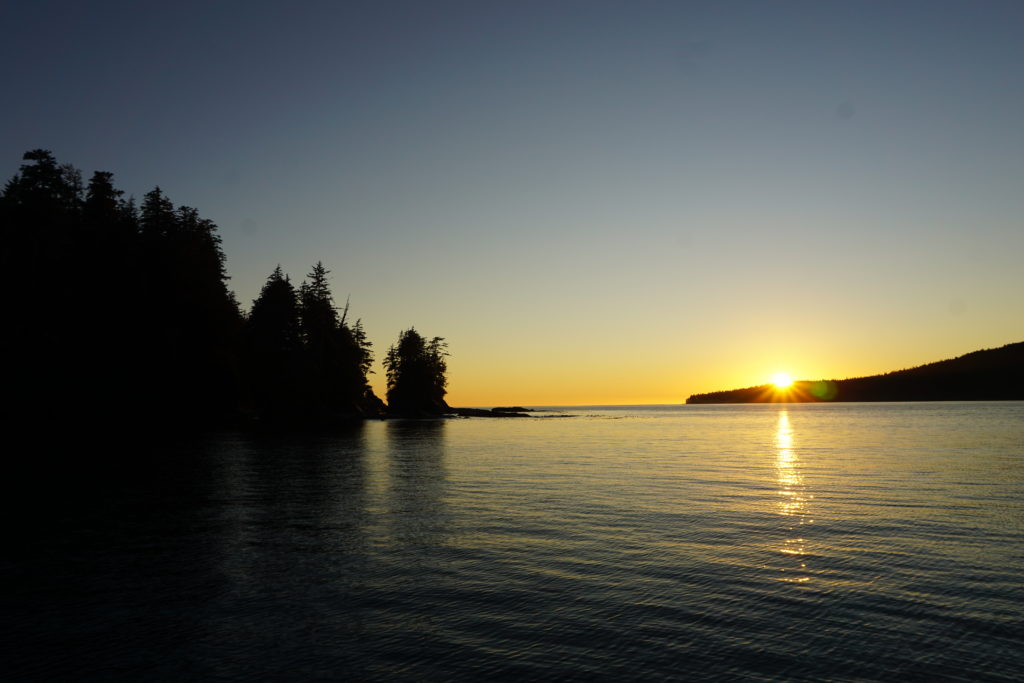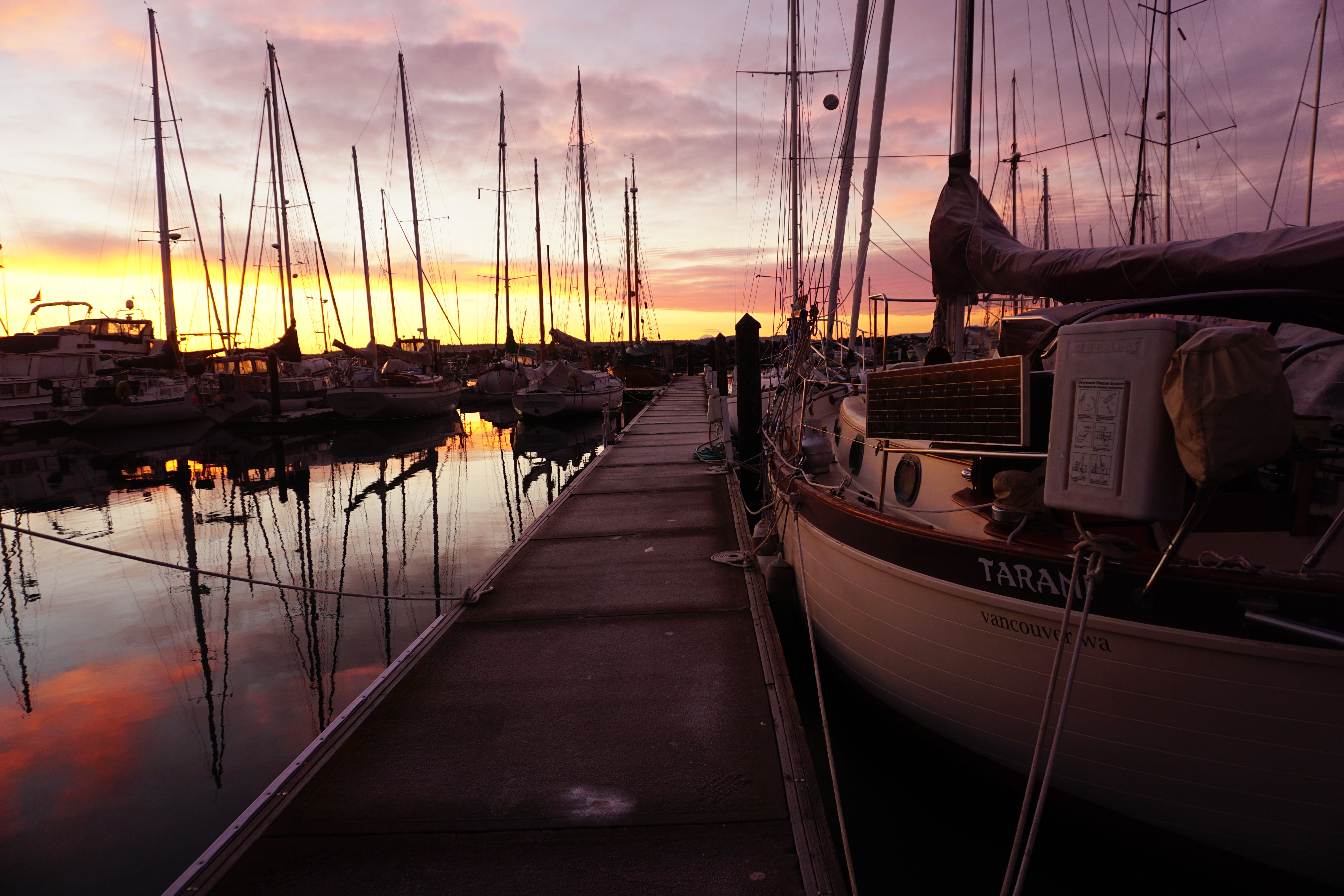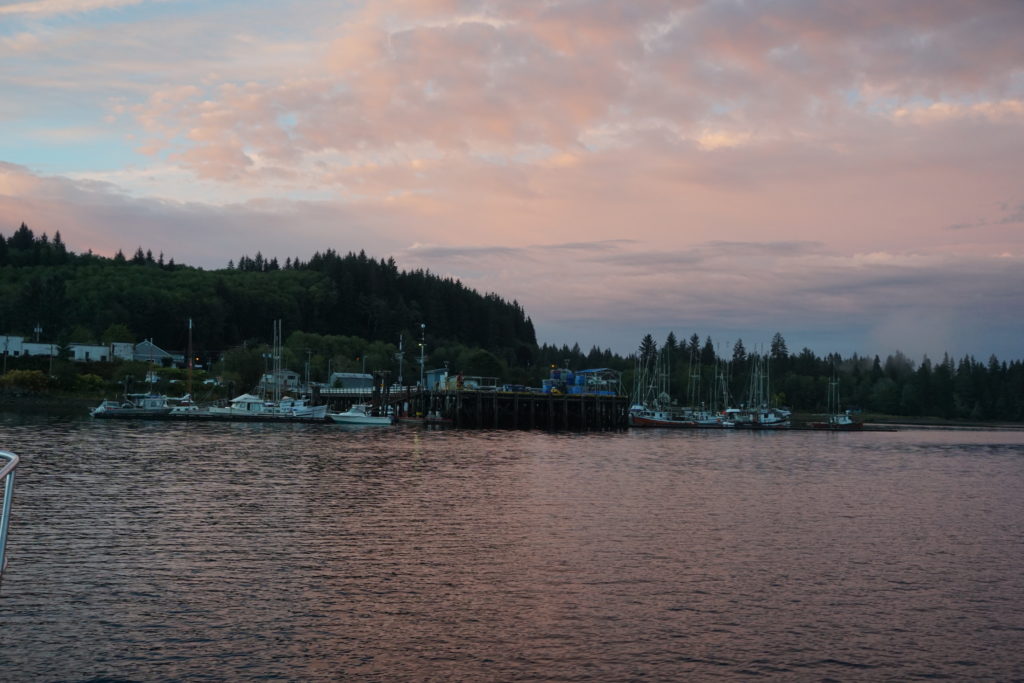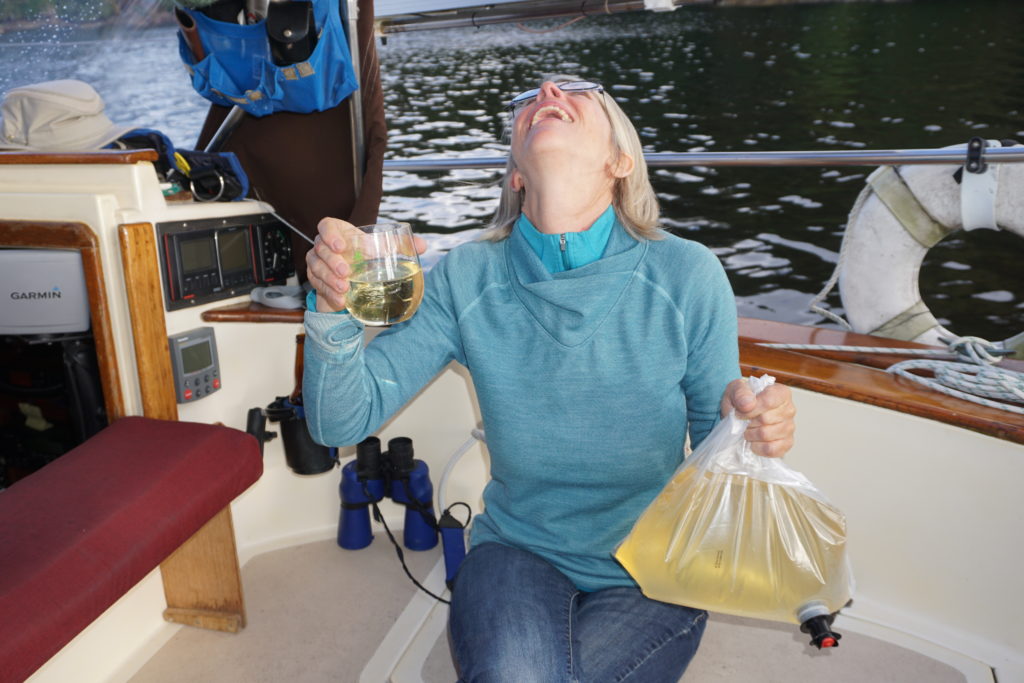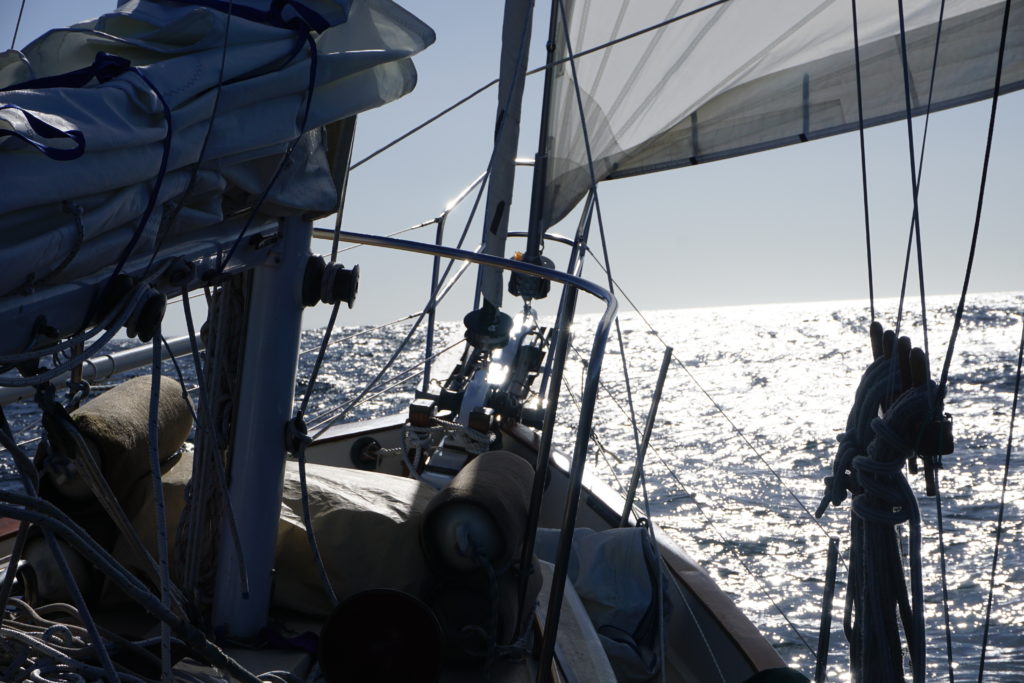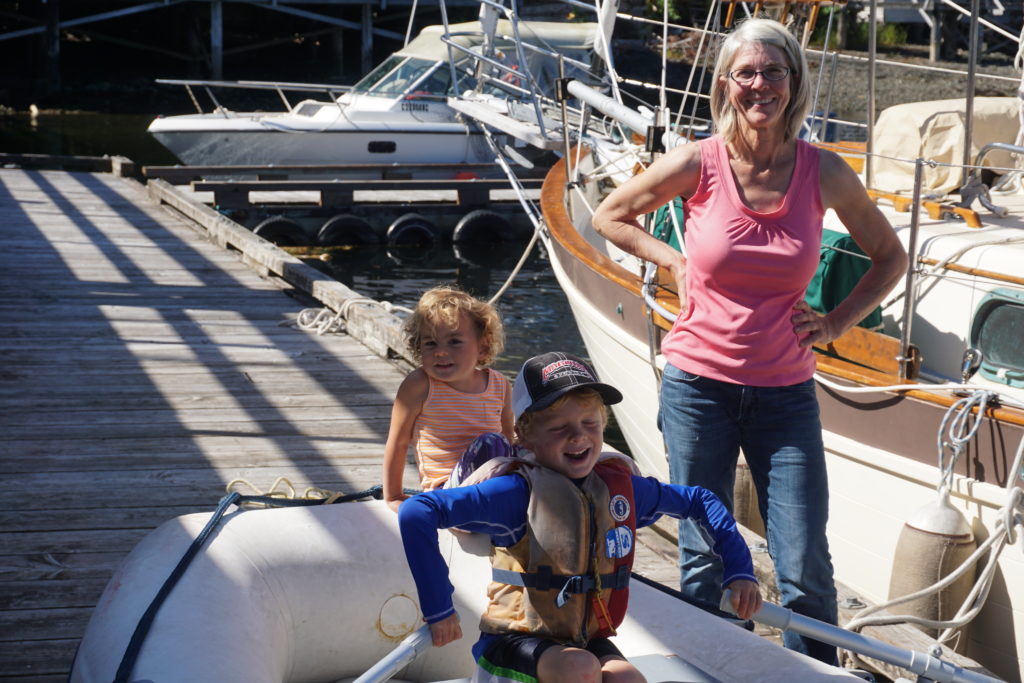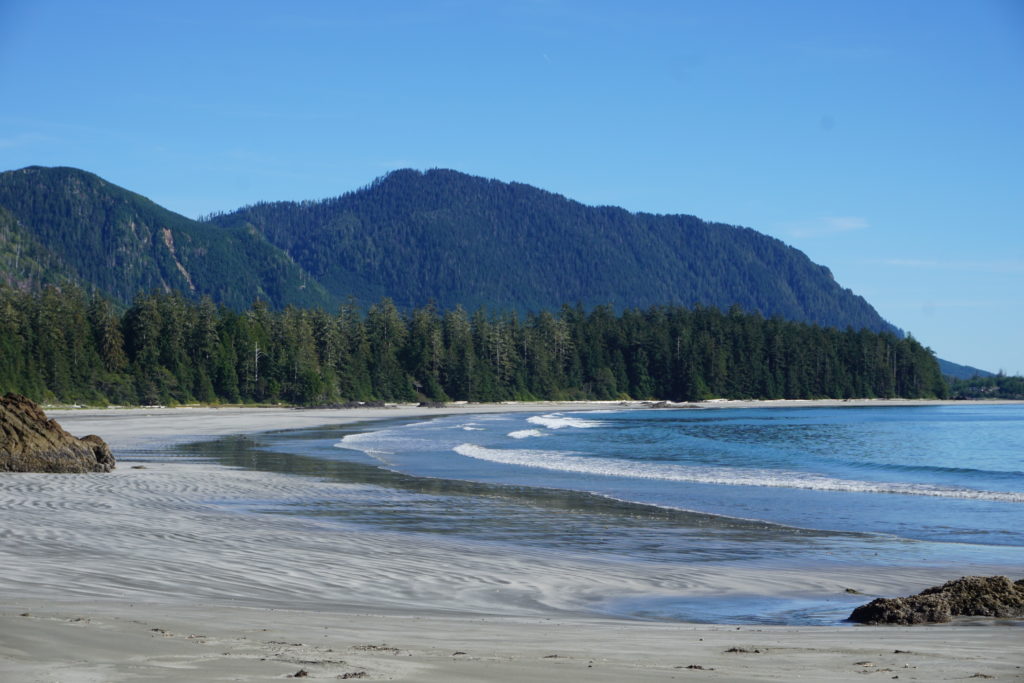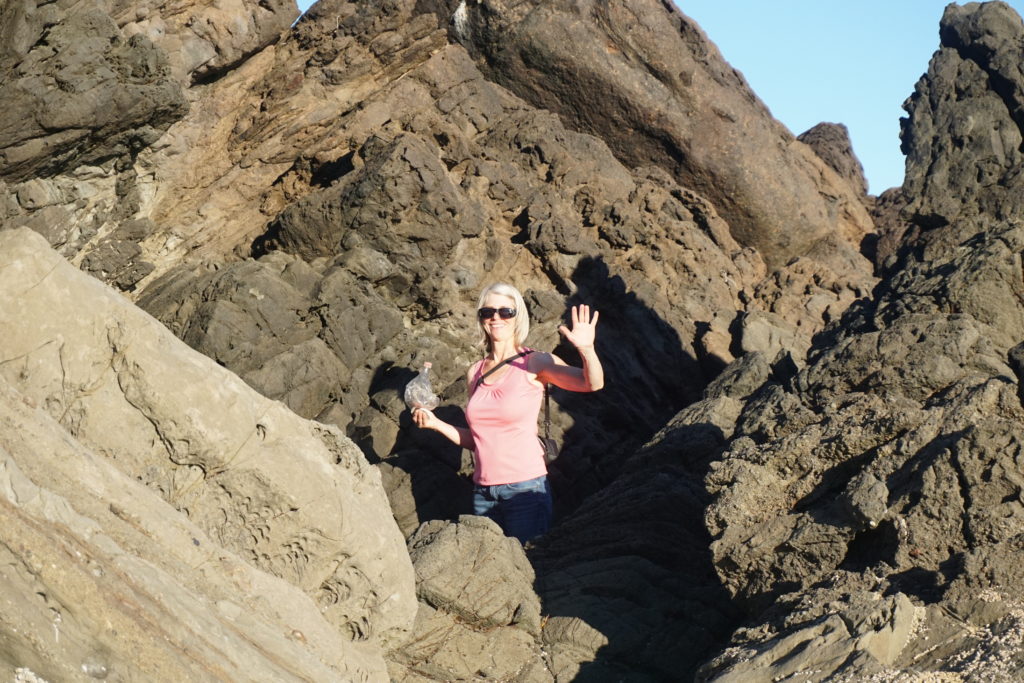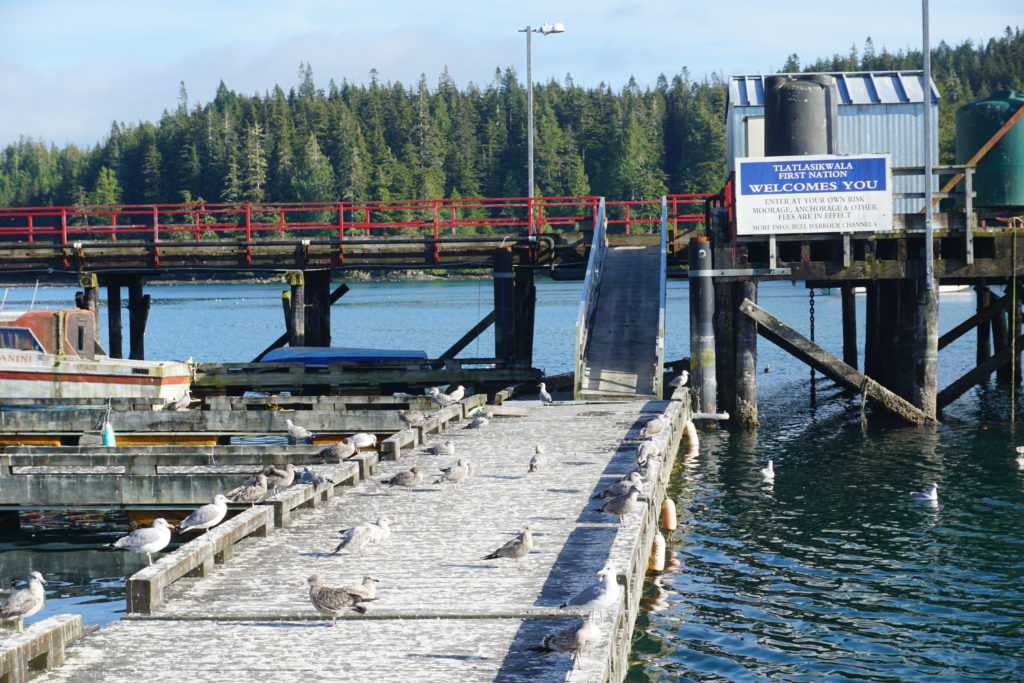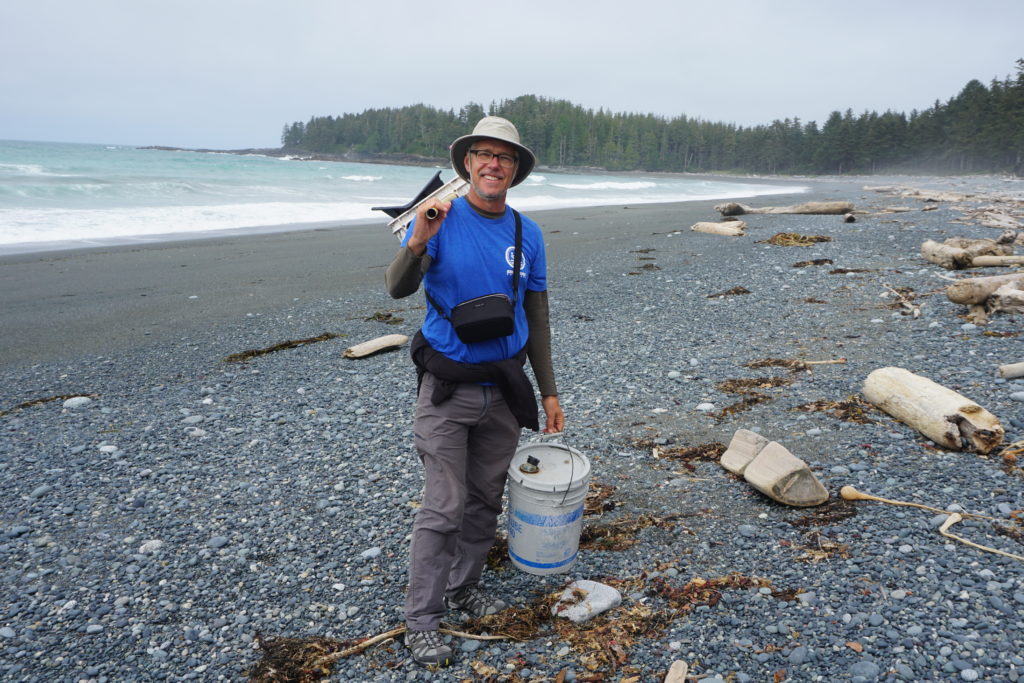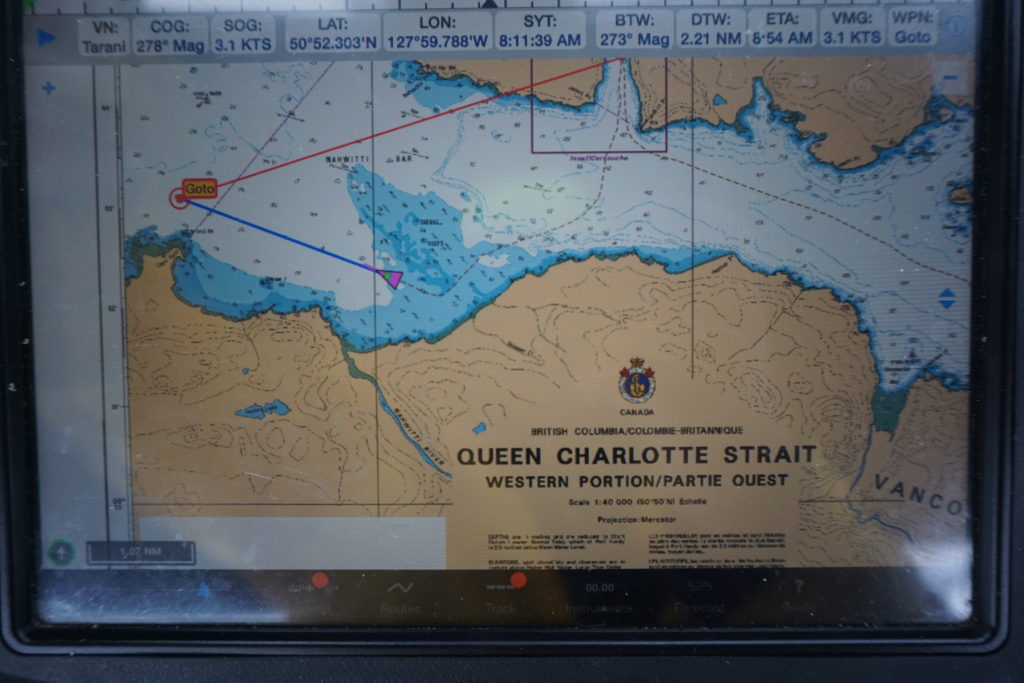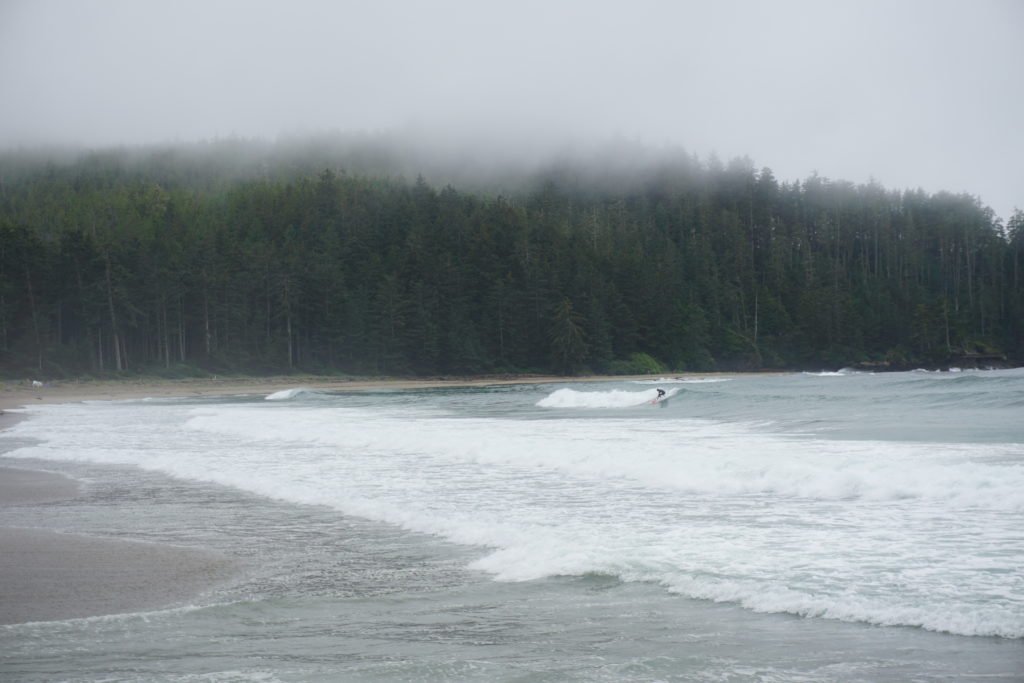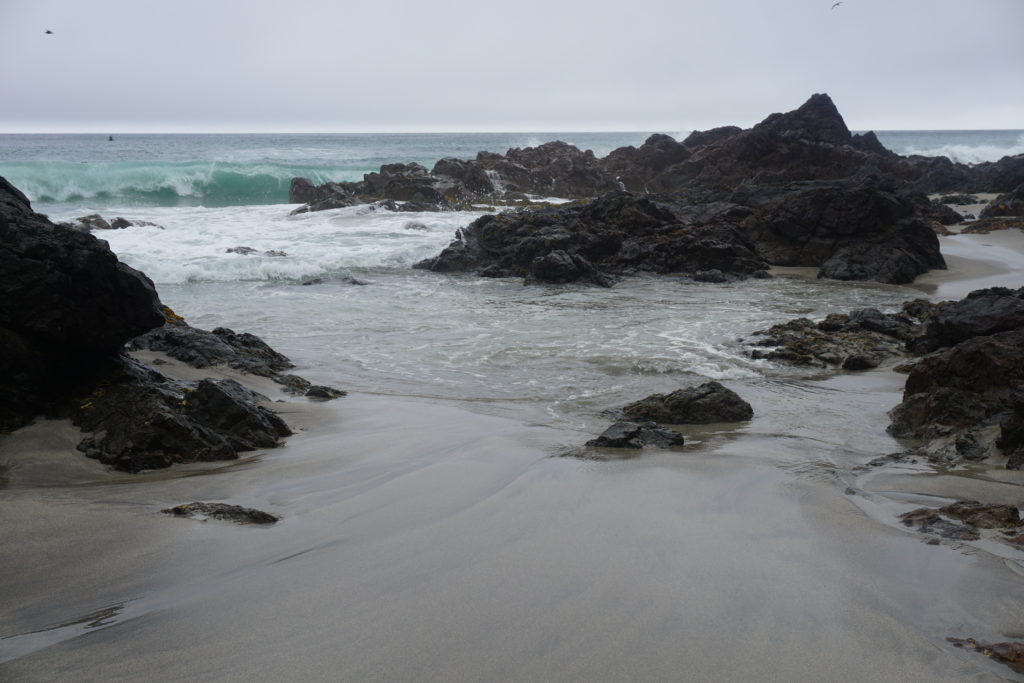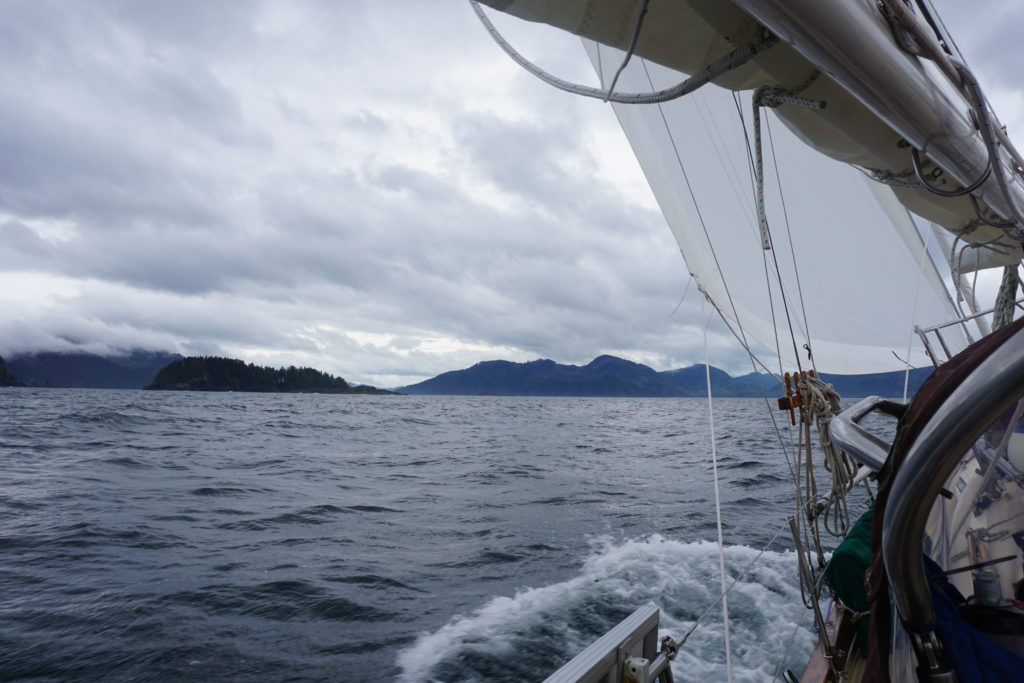“Nobody on the road, nobody on the beach. I feel it in the air, the summer’s out of reach.” (The Eagles/Don Henley). And so, we left the sunny beach at Rugged Point to the wolves and the bears and went back out into the ocean and down to Espereranza Inlet.
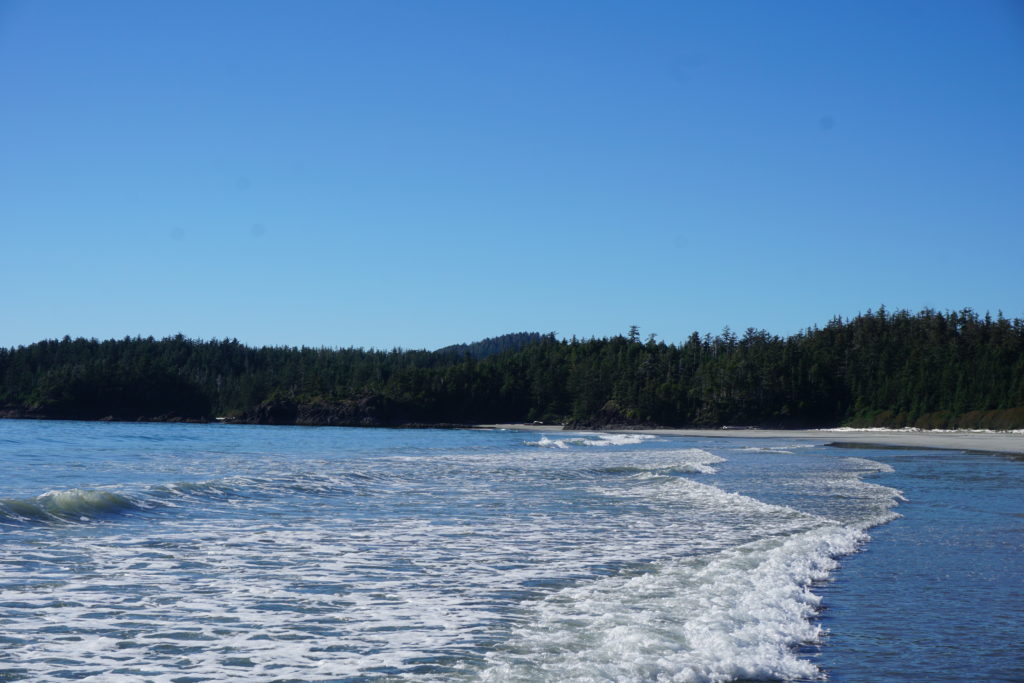
Riding the west swell into Gillam Channel and taking the inside route brought us after a couple days to historic Nootka Sound where for millennia the Nuu Chah Nulth have abided at Yuquot. Here we contemplated the intersection of aboriginal and european cultures. In 1790 the English and Spanish signed an accord here that prevented a war between the two colonial powers as they vied for control of this part of the New World. Only two centuries later the presence of the white man seems greatly diminished but the Muchalat Band remains. It was to the Band’s elder Ray Williams that we paid our landing fee and got permission to walk around and explore.
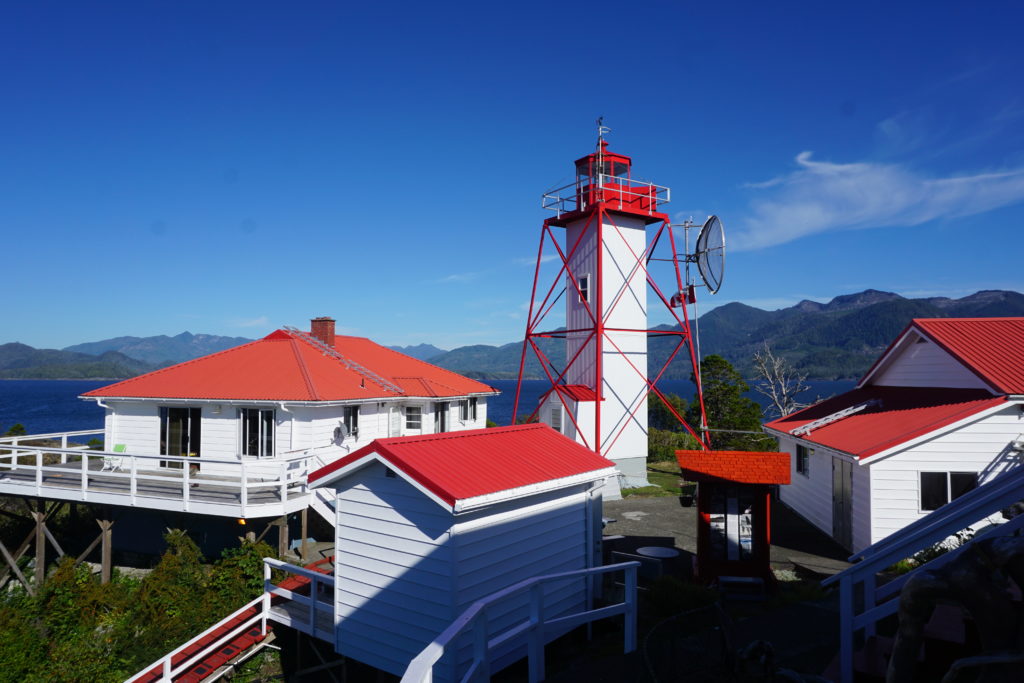
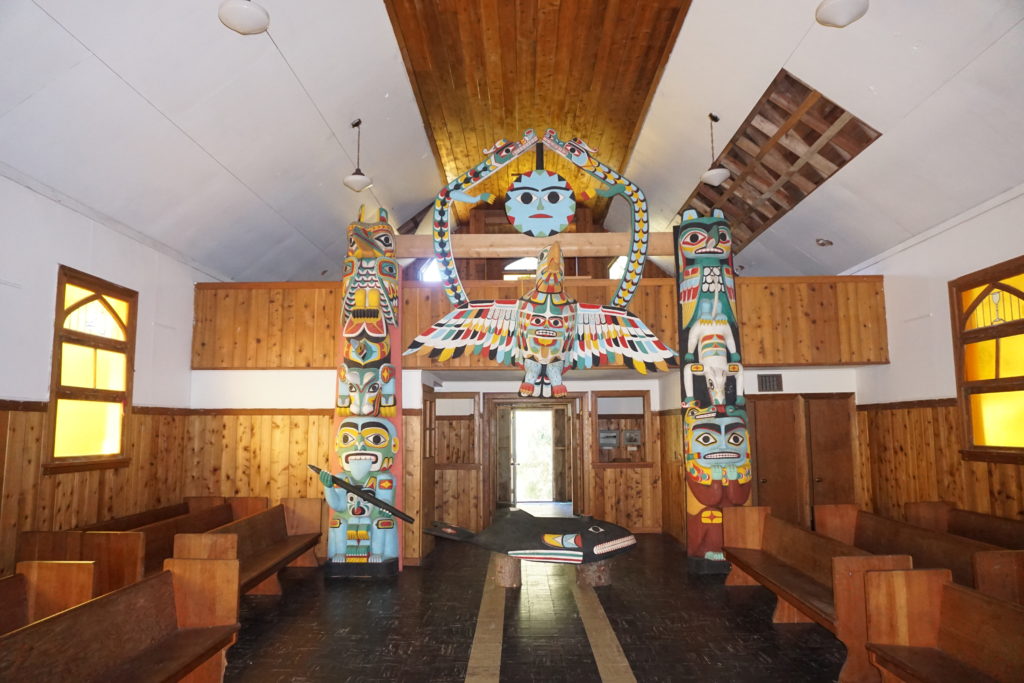
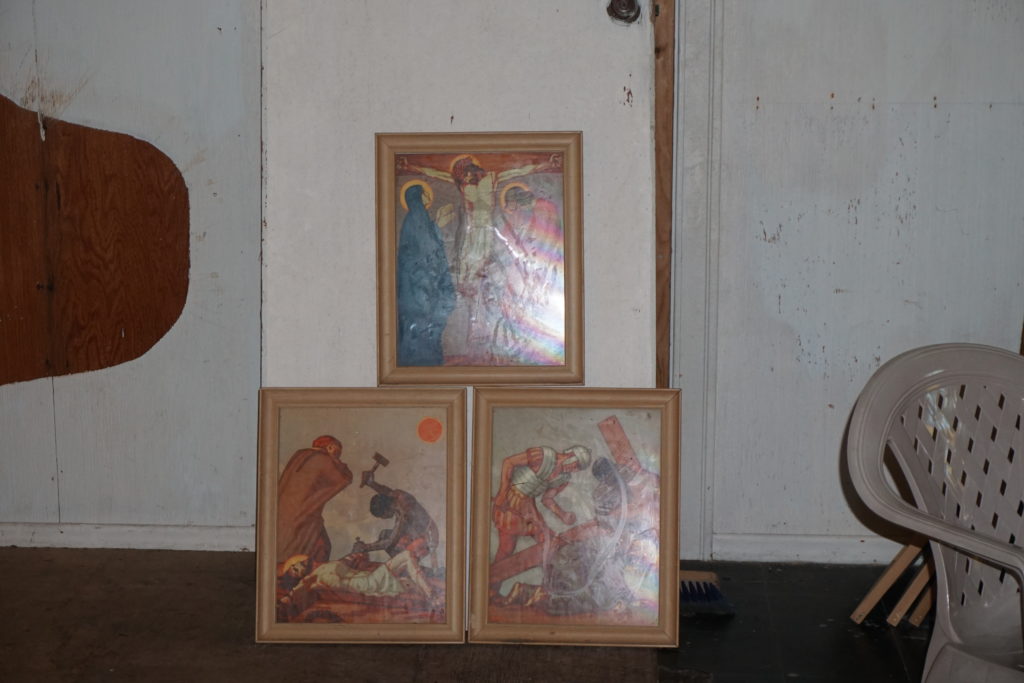
Above: Inside of the Catholic church donated by the Spanish, now more of a First Nations cultural house. Set aside on the floor are a few very graphic christian images, romans hammering spikes through Christ, etc. No doubt these were helpful in showing the heathens how civilized people treat each other. We paid Ray a few bucks extra to stay on the dock overnight but it was a noisy, unsettled arrangement. It was a weird dock and it woke me up squawking and groaning, I had to go out to adjust lines in the middle of the night. Unresolved tensions, maybe?
Anyway, we departed Nootka at first light and rounded Estevan Point, the 3rd most exposed rounding on the West Coast. It was a little bit rough and a little bit chilly and a slow passage but as we pulled into Hot Springs Cove the sun came back out. The Hot Springs is a major tourist destination with many boats and float planes bringing folks over from Tofino to experience the miracle of geothermal bathing. We broke out an early happy hour and waited until almost everyone had left before we rowed ashore and hiked out the boardwalk to take a soak. It was marvelous! Showers as strong as a therapy jacuzzi and as hot as you could stand it. Very relaxing.

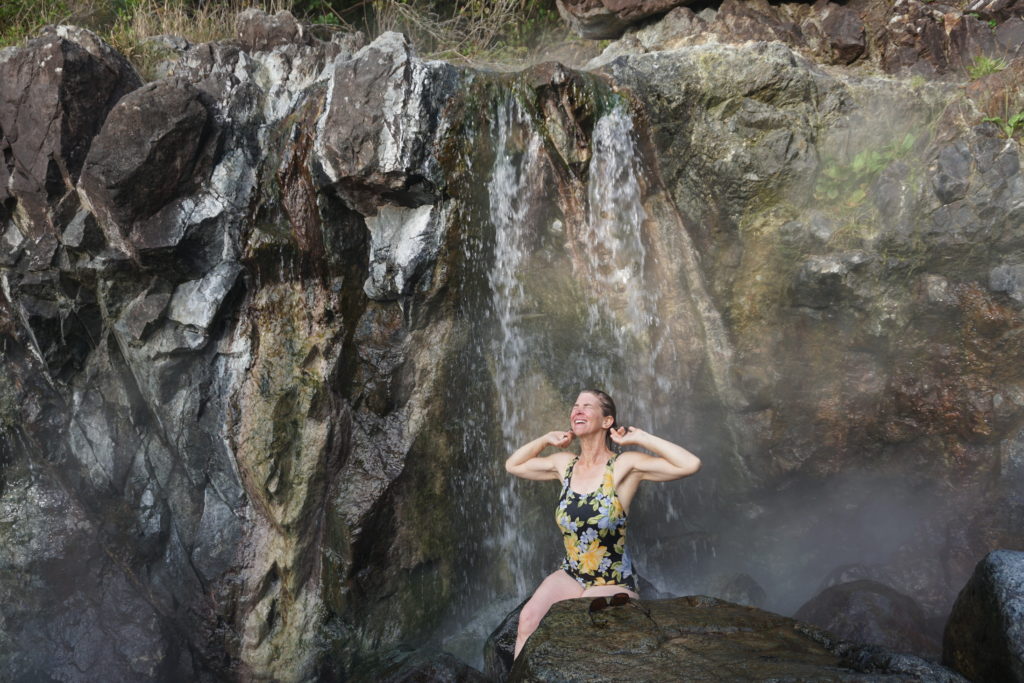
Next day we cruised down to Tofino and checked out the surfing town that sucks on the teat of tourism. Very cool place but it did not have the off-season feel that we’d hoped to find. Many no-vacancy signs hung outside the motels all along the strip. By one day we had missed the dedication of a sculpture that had been acquired and brought back to its home in Tofino. She was cast in the 1980’s as the anti-logging protests were building. The message of Weeping Cedar Woman is “Stop, and consider Nature.” More and more I discover truth in fiction and in art. Don’t you?
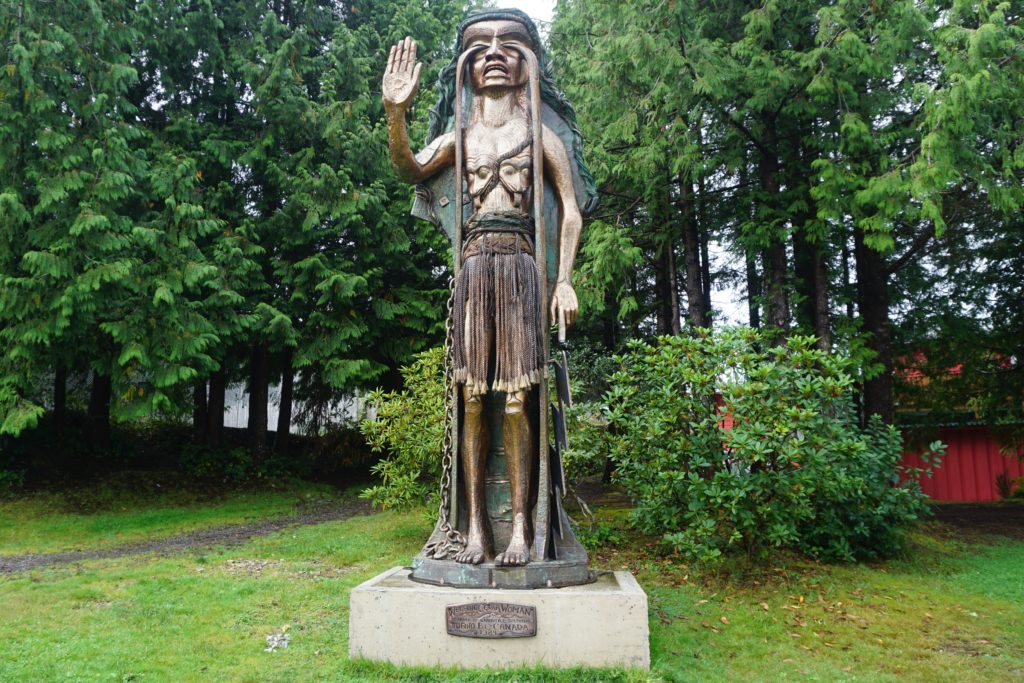
Back out on the ocean we went slowly down into the fog at Amphitrite Point and up to the little town of Ucluelet, known affectionately by locals as “Ukee”. Although it also is reliant on tourism it did feel off season and had an entirely different vibe from Tofino, more family-like, more blue collar. We liked it.
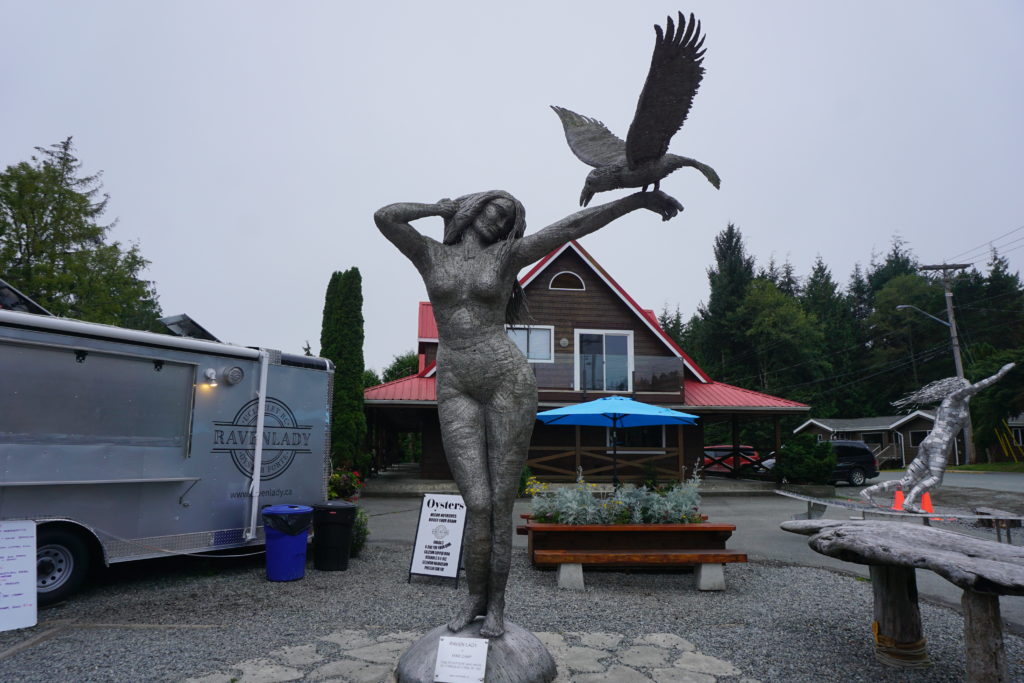
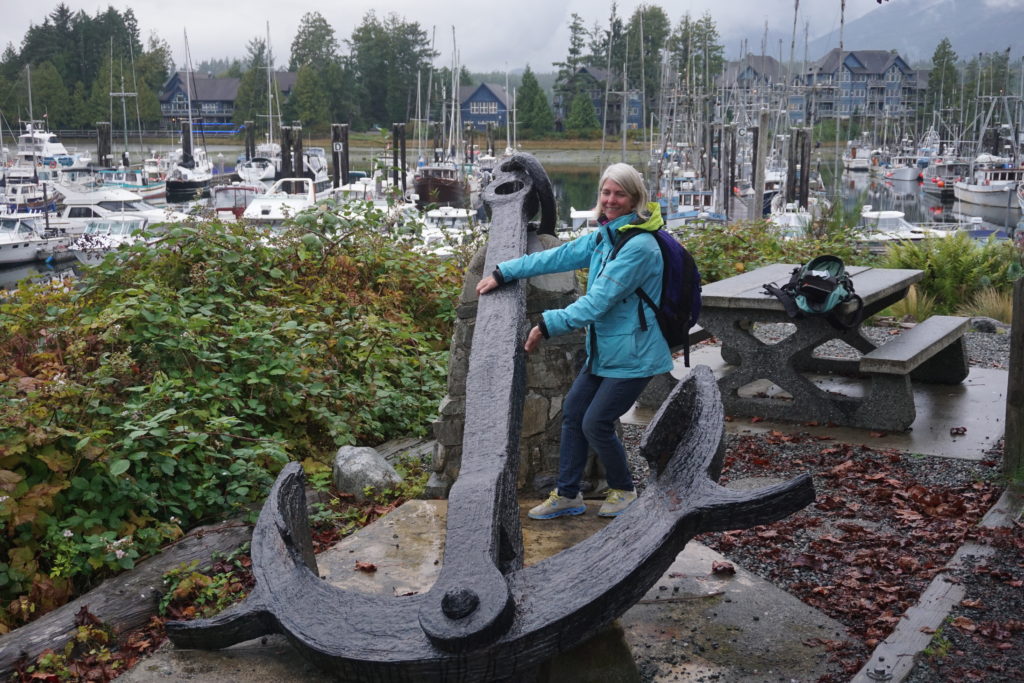
From Ukee we expedited out visit in Barkley Sound in deference to our desire to keep moving on. It is a lovely place, much loved by cruising sailors. I especially like the rugged islands in the eastern part that have sea caves and lots of snug beaches to explore.
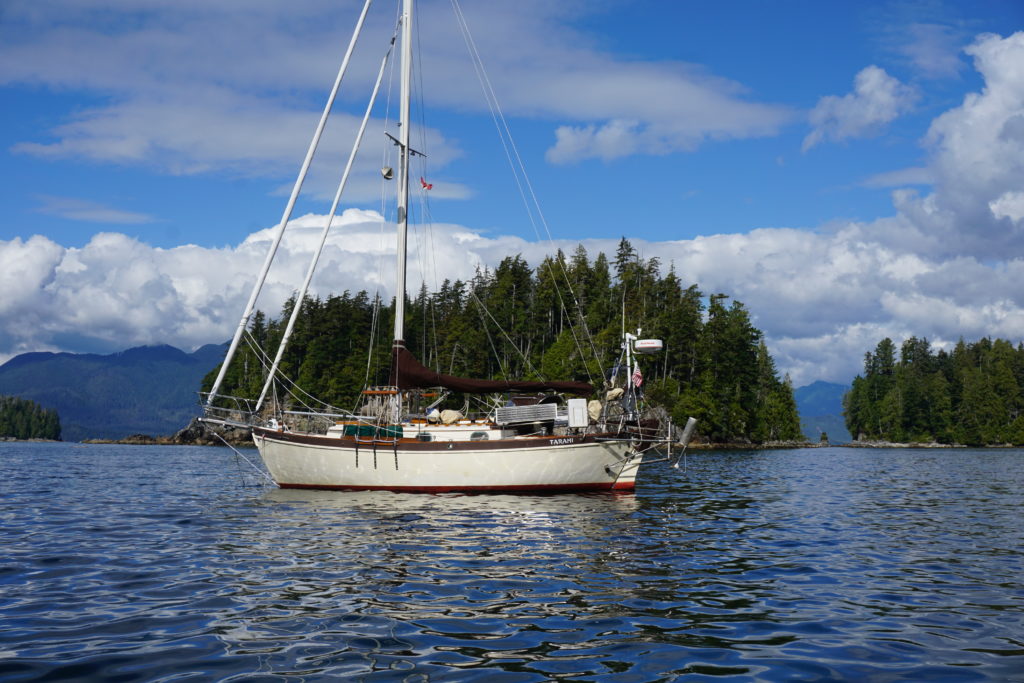
At the southwest corner of Barkley Sound sits pretty little Bamfield. There’s not much here, the town’s divided by a 2 mile inlet, half the town doesn’t have roads, only sidewalks. There’s a pub with no beers on tap, a mud and gravel road up to the Marine Sciences Center, a Health Center, a few restaurants, a couple stores and, well actually it is a pretty cool town. I could spend more time here someday. Met an inspirational figure here, a fellow sailor and retired firefighter from Vancouver (big Vancouver, that is) who retired 27 years ago and still looks fit as a fiddle, full of life. This got me thinking.
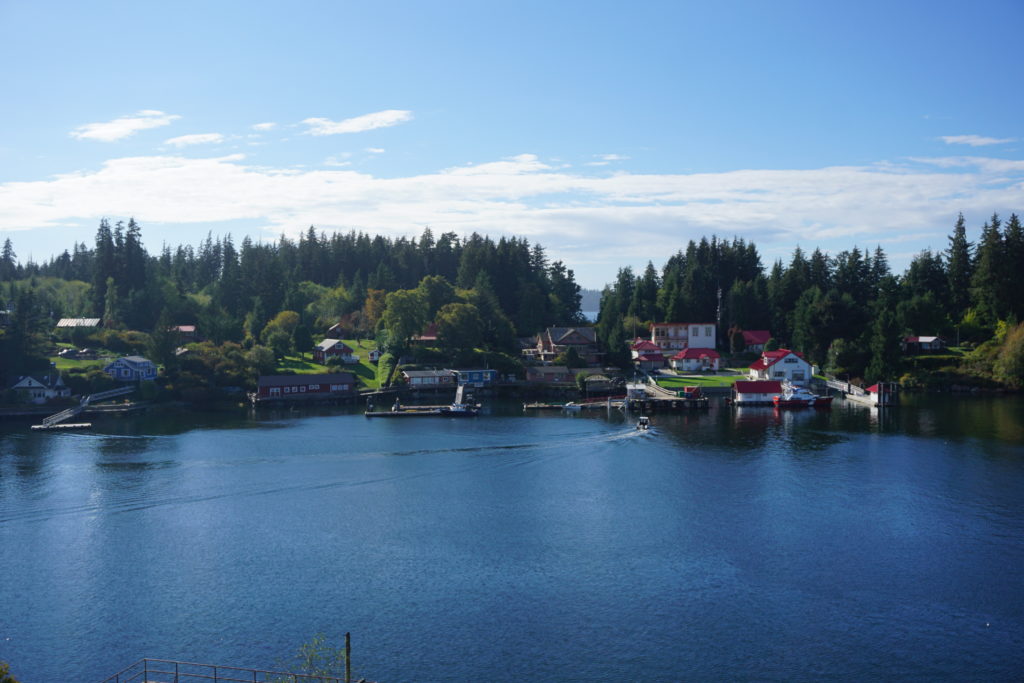
Its been four months since Karen and I left Port Townsend to explore and experience the maritime environment of the Pacific Northwest. We’ve seen much and have loved it, but as Debbie Downer (not Karen) says, “all good things must come to an end.” Tonight we sit at anchor in Bamfield, tomorrow we start the long run down the Strait of Juan de Fuca and back towards civilization. But, in less than a week we will be back to Port Townsend and back to “normal”, or will we?

I think our experiences have changed us. Maybe the effect will fade after a few months but I now know more about the natural world than when I started. We’ve seen humpbacks and orcas, porpoises and otters, ravens and eagles, grizzlies and black bear. We’ve become intimate with the tidal cycle, wandered wilderness beaches and rediscovered ourselves. And we have met a lot of good people. I have greater hope for the future even when humans seem oblivious to our interdependence with all life.
I am more sure than ever that I will be involved in the seemingly hopeless struggle to help humanity confront the reality of climate change, but I need to maintain my sanity and immerse myself in nature on a regular basis. I will continue to encourage people to transition away from burning fossil fuels for energy, and to demand from our government protection of the environmental Commons. The sooner we can mitigate the damage we are doing, the better the chances for human survival and the less damage we do to the other species sharing our ecosystem. I especially want to get involved in societal efforts to prepare for and adapt to the changes expected. These run the gamut; extreme weather, droughts and famine, sea level changes, ocean acidification, increased global conflict, mass extinctions and the potential for the collapse of human civilization. I feel privileged, challenged, humbled and horrified that I am alive during this period of human history. We have burned the fossilized remains of life from eons past and we have opened Pandora’s Box. Yes, it seems likely that our ship will be thrown up on the rocks but as mariners know you have to stay with your ship, she’s the best chance we have and we may yet survive the coming winter’s storms. So, hang on matey! Even though it looks like the end of summer for globalized human civilization we can hope for the dawn of something better.
